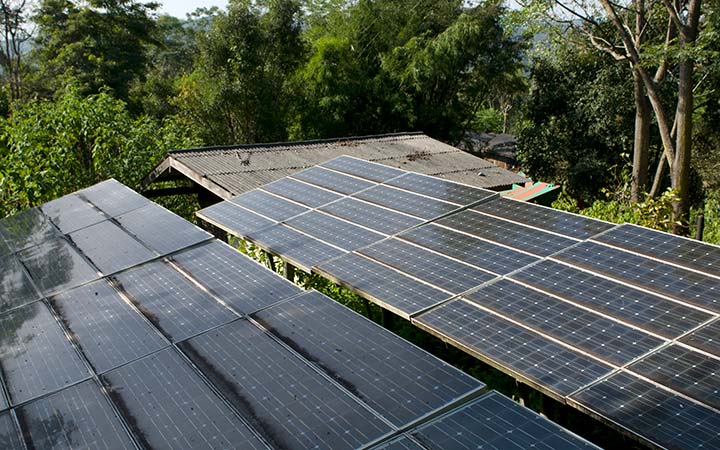Assessing Distributed Photovoltaic Impacts on Utilities in Thailand
The USAID-NREL Partnership assessed the impacts of distributed photovoltaics (DPV) on utility revenues and customer electricity rates in Thailand.

In Thailand, prosumers are on the rise. Prosumers are both producers and consumers of electricity, effectively supplementing their electric utility purchases with electricity produced by their own systems. More customers are looking to install localized, smaller-scale solar energy systems as prices drop and favorable, Thai government policies take effect. This scenario has energy stakeholders across the globe wondering: will deploying more distributed solar reduce utility revenues and lead to higher customer electricity rates in the country?
With support from USAID’s DPV Program, the National Renewable Energy Laboratory, Lawrence Berkeley National Laboratory, USAID Clean Power Asia and Chulalongkorn University’s Energy Research Institute conducted a study on the impact of DPV on utility revenue and rates in Thailand.
The study offers insights into the electricity regulatory framework in Thailand, various potential compensation schemes for DPV, and their impact on distribution utility revenue and customer tariffs when DPV is installed by customers in Thailand.
Overall, this study demonstrates that policymakers can move forward with a DPV interconnection and compensation policy in Thailand without concerns around utility revenues or retail tariff impacts. Should concerns still exist, they can consider relatively common policy tools such as system-wide DPV deployment caps or retail tariff impact caps at the national level.
To learn about the DPV Program Toolkit, visit the Greening the Grid website.
Aggressive Deployment Scenario Impact
The study quantifies the impact of an aggressive deployment scenario, where 3,000 MW of DPV systems are installed by the year 2020. This level of solar penetration would represent approximately 2.5% of the country’s energy supply—a relatively ambitious target given that today’s DPV penetration is minimal. Even with the aggressive deployment scenario, distribution utilities should see minimal impact on their financial health from increased DPV deployment in the medium and long-term with proper planning.
Excess Electricity Compensation Impact
The study finds that the way in which distributed solar customers are compensated for their excess electricity appears to matter significantly. In Thailand, utility customers are more likely to see a modest average retail electricity rate increase of 0.1-0.3% under a base scenario. Therefore, the design of DPV policy becomes a balancing act between incentivizing customers to deploy DPV and a desire to moderate the impacts on utilities and other ratepayers that do not invest in DPV.
More Information
Read the USAID ClimateLinks blog post, Distributed Solar: Evaluating the Financial Impact on Utilities in Thailand.
Watch these webinars on the Clean Energy Solutions Center website:
Building Blocks for Distributed PV Deployment, Part 1: Goals, Definitions and Compensation.
Read NREL's fact sheet, Grid-Connected Distributed Generation: Compensation Mechanism Basics
Download the Report
Understanding the Impact of Distributed Photovoltaic Adoption on Utility Revenues and Retail Electricity Tariffs in Thailand
DownloadShare

